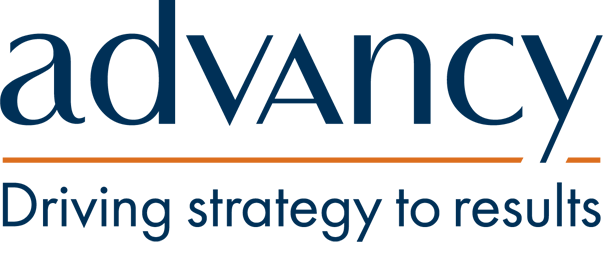Preparing for case studies
 During your interviews with our consultants you will be asked to participate in case studies similar to real projects conducted by Advancy.
During your interviews with our consultants you will be asked to participate in case studies similar to real projects conducted by Advancy.
These case studies allow you to demonstrate your problem-solving skills by following a well-structured analytical approach.
How do case studies actually work?
Your interviewer will briefly describe the context and the problem. The case may be very short and be far from your field of competence… but don’t lose heart! Listen carefully and make sure that you have fully understood the question. Take a few minutes to think, prepare the questions you consider important, give structure to your analysis, then start to reply.
The case resolution should be conducted by interacting with the consultant. Feel free to ask him/her for more information to help you prepare your answer. Your questions are at least as important as your replies. Challenge your interviewer if necessary!
We do not expect you to come up with THE correct answer because often there are several, but we DO expect you to outline a number of methods to resolve the problem posed.
We assess your problem-solving skills by evaluating your ability to form hypotheses, ask key questions, bring structure to problem solving development, summarise problem progress, arrive at conclusions and focus on the result.
Here is an example of a case study that you can use to practice.
Your client is the subsidiary of a major European corporation that manufactures textile fibers for the home fittings market, and notably for carpets. The company operates solely in France. It produces 10,000 tonnes per year and generates revenue of €50 million. It is losing €10 million every year. The shareholders have just appointed a new CEO with the main goal of finding the best short-term solution. Can the company be turned around? Should it be closed or sold? The new CEO contacts you for assistance in his assignment. What would you advise him to do?
The first thing I note is that losses are substantial at €800,000 every month. An analysis of the fundamentals is needed to determine a future direction. To start with, I offer to analyse the company’s position in its market.
Advancy: what do you want to know?
Firstly, I would like to know the breakdown of the company’s client portfolio. What is the revenue from each client? What is its market share?
Advancy: the company has two major client segments. The first is made up of businesses, primarily hotels and companies. It generates 40% of its revenue in this segment and its market share is close to 60%. The second segment is the general public. Here the company has a market share of 35%.
What are the main differences between the products supplied to these two segments?
Advancy: the two segments purchase fairly different products. Businesses want top-quality products, i.e. thick, resistant fibers. The brand is important. Conversely, the general public market is a consumer market where price is the key factor. Competition is intense.
In view of these substantial differences, I imagine that the profit-earning potential of the product lines is very different depending on the client?
Advancy: you are right. An analysis of “products x clients” pairs showed that business clients were profitable whereas it is difficult to make money with consumers. The margins are too slim.
At this stage an initial observation is clear. The company generates most of its revenue in a client segment that currently has little or no profit-earning potential. What can be done? I see two major alternatives in an attempt to turn the company around. The first, strengthen its position in the business market because it is profitable. But with 60% of the market share it is probably difficult to go a great deal higher. What do you know about competitors?
Advancy: the remaining 40% of the market is mainly occupied by a player that uses specific technology and is in great financial shape. This market is inaccessible to the company without investment. This market is also unlikely to show considerable growth. The rest of the market, about 5%, corresponds to spot deals which in general are won by foreign companies that saturate their capacity but sell below their cost price.
The conclusion is that potential growth with businesses is small. The other alternative to bring the company in the black would be to increase profit-earning potential in the consumer market.
Advancy: yes, but how?
I would like to know whether its production capacities are saturated?
Advancy: total capacity is 12,000 tonnes per year, and current production is 10,000 tonnes.
In that case, we potentially have 2,000 tonnes, i.e. some 16% of capacity that could be produced and sold. The question we should be asking ourselves at this stage is: What would be the impact on the company’s business of putting these 2,000 extra tonnes on the market?
Advancy: you are right. What are your hypotheses?
If the company produced the additional 2,000 tonnes the cost per kg would be less and margins would be improved.
Advancy: I agree with the principle but what would be the real impact?
Fixed and variable costs would have to be separated to assess impact on the cost of increasing production volumes. Do you know the distribution between the fixed and variable costs?
Advancy: the cost structure is known. The cost price of one kg is currently €6. Fixed costs account for 50% of total costs.
Therefore, fixed costs are €3 per kg. Given that current production is 10m tonnes, fixed costs are €30 million. If tomorrow the company moves to full capacity and if it is assumed that fixed costs are really fixed, then if production is increased by 2,000 tones the fixed costs would fall to €2.5 per kg (€30m for 12,000 tonnes).
The extra 2,000 tonnes will have an impact on the contribution to variable costs of €4 million (€5 sale price – €3 variable costs => €2 per kg contribution to variable costs).
Advancy: do you really think the market price will remain unchanged? It would be prudent to anticipate a decrease in average price.
Indeed, let us suppose that the market price is affected by these extra tonnes and falls by 10% to €4.5 per kg. Current volumes will be affected by the €0.5 per kg, losing €5 million (10,000 tonnes x €0.5 / kg). At the same time, the extra 2,000 tonnes will generate €3 million (€1.5/kg contribution to variable costs). Overall, the impact is therefore –€2m.
Advancy: what is your conclusion?
Without a doubt sell and divest from this business.
Advancy: before that, can any other solutions be considered?
OK… if we summarize the situation. At the current market price, increasing volumes to full production capacity is a powerful lever but the effects on market price render this scenario ineffective.
On this basis, I would recommend a study of possible opportunities to export products and thus avoid hurting the domestic market.
From a theoretical standpoint, if we were able to sell the extra 2,000 tones on an export market with a market price of €5 per kg, the potential gain would be €4 million.
Also, it may be possible to find other outlets for the business-quality products where we know the profit-earning potential is greater.
I recommend a study of the main European markets to determine which show opportunities.
Advancy: what do you think of the plant closure option?
This extreme solution is justified only if there is no economically viable solution for a turnaround or if no competitors are interested in buying it.
Advancy: in your opinion how much would plant closure cost?
What would need to be financed? Repay current debt. Severance payments for all personnel. From a very macro standpoint, one year of total salary budget gives some idea. Finally, plans should be made for decontamination costs. We are probably talking about €15-20 million, i.e. 1.5 to 2 years on the basis of current performance.
Advancy: to conclude, what do you recommend?
If we summarize the situation, we have several scenarios:
- Capacity optimization and development of export sales: annual losses reduced to €6 million compared with €10 million today. Perhaps a little better with an optimized mix
- Closure: macro vision, approximately €20 million or 2 years of losses on current figures.
In the short term, a study is therefore necessary to determine export possibilities so that the company can move to full production capacity and also optimize the product assortment. The next step would be to prepare a sales plan.
In the longer term, I believe it would be preferable to divest from this business sector because the company is structurally poorly positioned to be profitable. In this case I recommend aiming for the top of a business cycle to seek a potential buyer.
